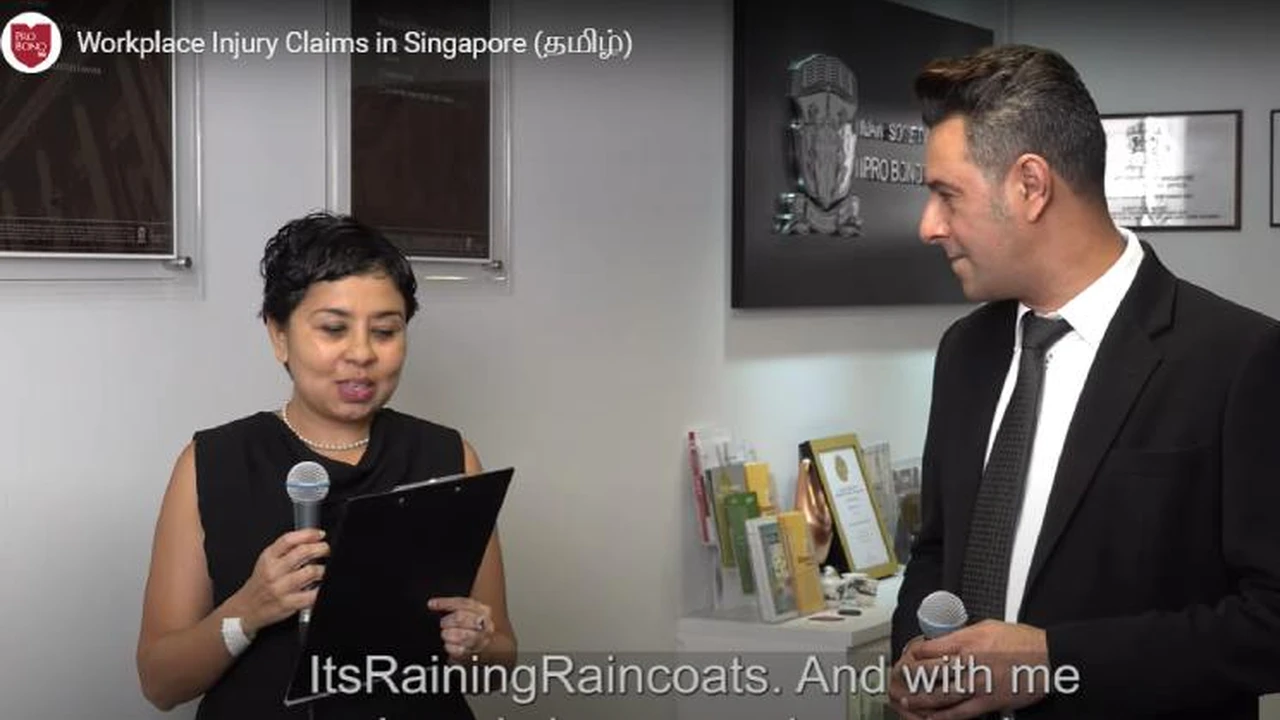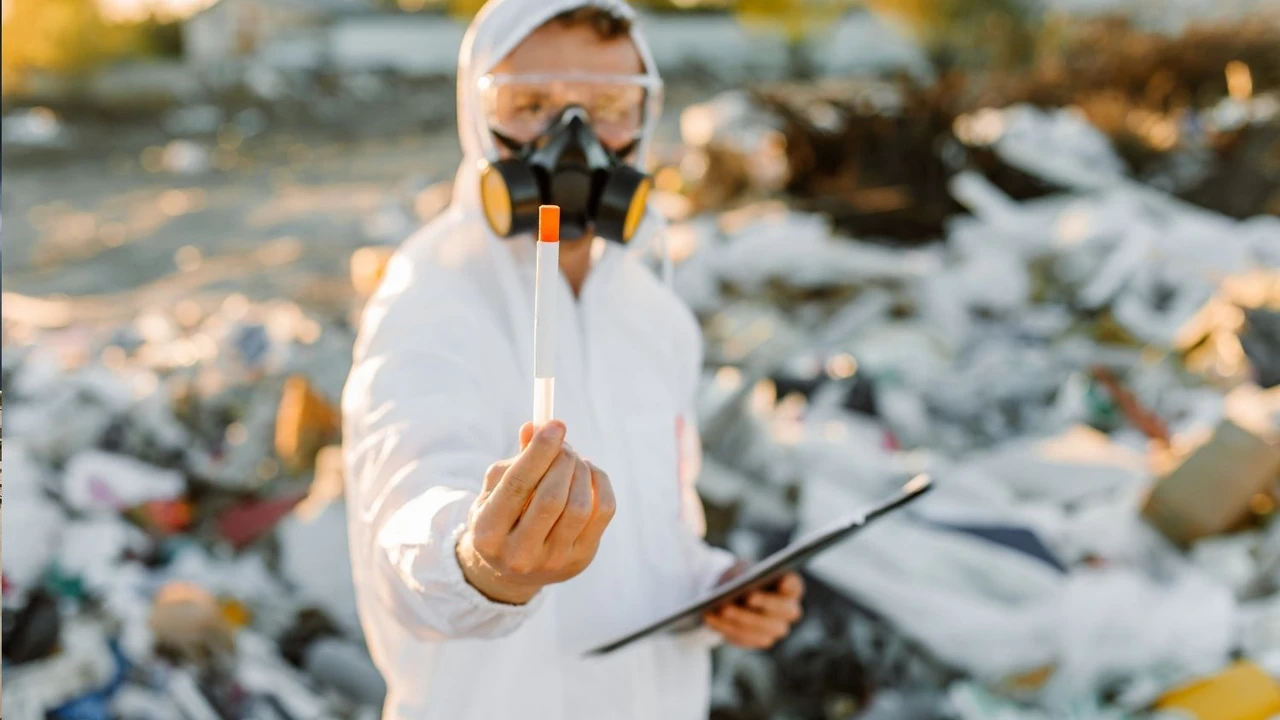5 Common Workplace Accident Causes
Identify the top 5 frequent causes of workplace accidents leading to personal injury.

Identify the top 5 frequent causes of workplace accidents leading to personal injury.
5 Common Workplace Accident Causes
Workplaces, regardless of their industry or size, can unfortunately be sites of accidents. These incidents can range from minor scrapes to severe injuries, sometimes even leading to fatalities. Understanding the most common causes of workplace accidents is crucial for both employers and employees. For employers, it's about implementing effective safety measures and fostering a culture of prevention. For employees, it's about being aware of potential hazards and knowing how to protect themselves. When an accident does occur, knowing the common causes can also help in understanding your rights and potential avenues for personal injury claims.
Understanding Workplace Hazards and Personal Injury Risks
Workplace hazards are everywhere, from the obvious dangers on a construction site to the less apparent risks in an office environment. These hazards can lead to a variety of personal injuries, impacting an individual's health, financial stability, and overall well-being. Recognizing these risks is the first step in prevention and, if necessary, in pursuing a personal injury claim. We're going to dive deep into the five most frequent culprits behind workplace accidents, offering insights into how they happen and what you can do about them.
1. Slips Trips and Falls The Unseen Dangers
Slips, trips, and falls are consistently among the leading causes of workplace injuries across all sectors. They might seem minor, but they can result in serious injuries like fractures, head trauma, sprains, and even spinal cord damage. These incidents often occur due to a combination of environmental factors and human error.
Common Scenarios for Slips Trips and Falls
- Wet or Oily Surfaces: Spills, leaks, or even freshly mopped floors without proper signage are prime culprits. Think about a restaurant kitchen with grease on the floor, or a factory floor with oil spills.
- Uneven Surfaces: Damaged flooring, loose rugs, potholes in parking lots, or even slight changes in elevation can cause someone to lose their footing. Construction sites are particularly prone to this, but even an office with a frayed carpet can be a hazard.
- Obstacles in Walkways: Clutter, electrical cords, tools, or materials left in aisles and walkways create tripping hazards. Imagine a warehouse where boxes are stacked haphazardly in a path, or an office where charging cables snake across the floor.
- Poor Lighting: Inadequate lighting can obscure hazards, making it difficult for employees to see where they are going. This is especially true in storage areas, stairwells, or outdoor work zones at night.
- Improper Footwear: Wearing shoes without adequate grip or support can significantly increase the risk of slipping, especially on certain surfaces.
Preventing Slips Trips and Falls and Your Personal Injury Claim
Prevention is key here. Employers should ensure good housekeeping, prompt spill cleanup, proper lighting, and clear pathways. Employees should wear appropriate footwear and report hazards immediately. If you've suffered a personal injury due to a slip, trip, or fall, documenting the scene with photos, getting witness statements, and seeking immediate medical attention are crucial steps for any potential claim.
2. Struck By or Against Objects Understanding Impact Injuries
This category covers a broad range of accidents where an employee is hit by a moving object or strikes against a stationary object. These incidents can lead to concussions, lacerations, contusions, and internal injuries, often with significant personal injury implications.
Typical Scenarios for Struck By or Against Accidents
- Falling Objects: Tools, materials, or equipment falling from shelves, elevated work areas, or during lifting operations. Construction workers often face this risk, but even in an office, a poorly secured shelf can be dangerous.
- Moving Vehicles or Equipment: Being hit by forklifts, trucks, cranes, or other machinery in industrial settings, warehouses, or construction sites.
- Swinging or Flying Objects: Objects ejected from machinery, tools, or materials being handled improperly. Think about debris from a saw or a piece of equipment malfunctioning.
- Striking Against Stationary Objects: Bumping into walls, machinery, furniture, or other fixed structures, often due to poor visibility, rushing, or inadequate workspace.
Mitigating Struck By or Against Risks and Your Personal Injury Rights
Employers need to implement strict safety protocols for material handling, secure all elevated objects, maintain machinery, and ensure clear traffic lanes for vehicles. Personal protective equipment (PPE) like hard hats and safety glasses are vital. If you've been injured in such an incident, identifying the object, the circumstances, and any contributing factors will be important for your personal injury case. Was the equipment faulty? Was there a lack of training? These details matter.
3. Caught In or Between Hazards Entrapment and Crushing Injuries
These are often some of the most severe workplace accidents, involving an employee being caught, squeezed, or crushed between two objects or within machinery. The resulting personal injuries can be catastrophic, including amputations, severe fractures, and internal organ damage.
Common Caught In or Between Situations
- Machinery Entanglement: Hair, clothing, or body parts getting caught in moving parts of machinery, such as gears, belts, or rollers. This is a significant risk in manufacturing, agriculture, and any industry using heavy machinery.
- Between Objects: Being crushed between a moving vehicle and a stationary object, or between two pieces of equipment. For example, a worker caught between a forklift and a wall.
- Collapsing Structures: Being trapped under collapsing trenches, walls, or stacks of materials. Construction and warehousing are high-risk environments for this.
- Confined Spaces: Getting stuck or trapped in confined spaces, often leading to suffocation or other severe injuries.
Preventing Caught In or Between Accidents and Your Personal Injury Claim
Machine guarding, lockout/tagout procedures (to prevent unexpected startup of machinery), proper training, and safe work procedures are essential. Employers must ensure machinery is properly maintained and that employees are never asked to work in unsafe conditions. If you've suffered a personal injury from being caught in or between objects, the focus of your claim will often be on whether proper safety protocols were followed and if the machinery was adequately maintained or guarded.
4. Overexertion and Repetitive Motion Injuries The Silent Strain
While not as dramatic as a fall or a crushing injury, overexertion and repetitive motion injuries are incredibly common and can lead to chronic pain, long-term disability, and significant personal injury claims. These injuries often develop over time due to strenuous activities or repeated movements.
Typical Overexertion and Repetitive Motion Scenarios
- Lifting Heavy Objects: Improper lifting techniques or attempting to lift objects that are too heavy can lead to back injuries, muscle strains, and herniated discs.
- Repetitive Tasks: Performing the same motion repeatedly, such as typing, assembly line work, or using vibrating tools, can cause carpal tunnel syndrome, tendonitis, and other musculoskeletal disorders.
- Awkward Postures: Working in uncomfortable or unnatural positions for extended periods can strain muscles and joints.
- Pushing Pulling or Carrying: Strenuous pushing, pulling, or carrying of heavy or awkward loads.
Managing Overexertion Risks and Your Personal Injury Options
Ergonomic assessments, proper training on lifting techniques, use of mechanical aids, and job rotation can help prevent these injuries. Employers should provide adjustable workstations and encourage regular breaks. If you've developed a personal injury due to overexertion or repetitive motion, documenting your symptoms, seeking medical diagnosis, and demonstrating the link between your work activities and your injury are crucial for a successful claim. These cases often involve proving that the employer failed to provide a safe ergonomic environment or adequate training.
5. Contact with Hazardous Substances Chemical and Environmental Risks
Exposure to hazardous substances, whether chemical, biological, or environmental, can lead to a wide range of personal injuries and illnesses, from skin irritations and respiratory problems to severe burns, poisoning, and long-term diseases like cancer.
Common Hazardous Substance Exposure Scenarios
- Chemical Spills or Leaks: Accidental release of corrosive, toxic, or flammable chemicals. This is a major concern in manufacturing, laboratories, and cleaning industries.
- Inhalation of Fumes or Dust: Breathing in harmful vapors, gases, or particulate matter, such as asbestos, silica dust, or welding fumes. Construction, mining, and certain manufacturing processes are high-risk.
- Skin Contact: Direct contact with irritants or corrosive substances that can cause burns, rashes, or absorption into the bloodstream.
- Biological Hazards: Exposure to bacteria, viruses, fungi, or other biological agents, particularly in healthcare, waste management, or agricultural settings.
- Radiation Exposure: While less common, exposure to radiation in specific industries can cause severe health issues.
Protecting Against Hazardous Substances and Your Personal Injury Claim
Employers must provide proper ventilation, safety data sheets (SDS) for all chemicals, appropriate PPE (gloves, respirators, eye protection), and comprehensive training on safe handling and emergency procedures. Regular monitoring of exposure levels is also critical. If you've suffered a personal injury or illness due to hazardous substance exposure, proving the link between the exposure and your condition, identifying the specific substance, and demonstrating employer negligence in providing a safe environment are key elements of your personal injury claim. Expert medical and scientific testimony often plays a significant role in these cases.
Navigating Personal Injury Claims After a Workplace Accident
Experiencing a workplace accident can be a traumatic and confusing time. Beyond the immediate physical pain, there's the stress of medical bills, lost wages, and the uncertainty of your future. This is where understanding your rights and the process of a personal injury claim becomes vital. Whether you're in the USA or Southeast Asia, while specific laws differ, the fundamental principles of seeking compensation for negligence remain.
The Importance of Documentation for Your Personal Injury Case
After any workplace accident, documentation is your best friend. This includes:
- Accident Report: Ensure your employer files an official accident report. Get a copy.
- Medical Records: Seek immediate medical attention, even for seemingly minor injuries. All medical records, diagnoses, treatment plans, and bills are crucial.
- Photos and Videos: If possible, take photos or videos of the accident scene, the hazard that caused it, and your injuries.
- Witness Statements: Collect contact information and statements from anyone who witnessed the accident.
- Communication Records: Keep a log of all communications with your employer, HR, and any insurance adjusters.
Workers' Compensation vs. Personal Injury Lawsuits
In many regions, particularly in the USA, workers' compensation is a no-fault insurance system designed to provide benefits to employees injured on the job, regardless of who was at fault. However, workers' comp typically limits the types of damages you can recover (e.g., medical expenses and a portion of lost wages, but usually not pain and suffering).
A personal injury lawsuit, on the other hand, is typically filed when a third party (someone other than your employer or a co-worker) was negligent and contributed to your injury. For example, if a defective piece of machinery manufactured by another company caused your injury, you might have a product liability claim against the manufacturer. Or, if you were injured on a construction site due to the negligence of a subcontractor, you might have a claim against that subcontractor. These lawsuits can allow for a broader range of damages, including pain and suffering.
In Southeast Asian countries, the legal frameworks can vary significantly. Some countries have robust workers' compensation schemes, while others rely more on general tort law principles for workplace injuries. Consulting with a local personal injury lawyer is paramount to understand the specific laws applicable to your situation.
Choosing the Right Personal Injury Lawyer for Workplace Accidents
When you're dealing with a workplace injury, having the right legal representation can make all the difference. A skilled personal injury lawyer specializing in workplace accidents can help you navigate the complexities of workers' compensation claims, identify potential third-party lawsuits, gather evidence, negotiate with insurance companies, and fight for the compensation you deserve.
What to Look For in a Personal Injury Attorney
- Experience: Look for a lawyer with a proven track record in workplace accident cases, specifically those similar to yours.
- Specialization: An attorney who focuses on personal injury law, rather than being a general practitioner, will have a deeper understanding of the nuances.
- Local Knowledge: Especially if you're in Southeast Asia, a lawyer with knowledge of local laws and regulations is invaluable.
- Communication: Choose someone who communicates clearly, keeps you informed, and is accessible.
- Contingency Fee Basis: Most personal injury lawyers work on a contingency fee basis, meaning they only get paid if you win your case. This reduces your upfront financial risk.
Preventative Measures and Safety Products for a Safer Workplace
While accidents can happen, many are preventable. Employers have a legal and ethical responsibility to provide a safe working environment. Investing in safety training, proper equipment, and safety products is not just good practice; it's essential for preventing personal injuries and avoiding costly lawsuits.
Essential Safety Products and Their Applications
Here are some categories of safety products that directly address the common causes of workplace accidents:
For Slips Trips and Falls Prevention
- Anti-Fatigue Mats: These mats provide cushioning and traction, reducing fatigue and preventing slips on hard surfaces.
- Non-Slip Floor Coatings: Applied to floors, these coatings create a textured surface that significantly increases grip, especially in wet or oily areas.
- Safety Signage: Clear and visible signs for wet floors, uneven surfaces, or caution areas are simple yet highly effective.
- Industrial Floor Sweepers/Scrubbers: For large facilities, automated cleaning equipment ensures floors are kept clean and dry, reducing slip hazards.
For Struck By or Against Protection
- Hard Hats: Essential for protecting against falling objects, especially in construction and industrial settings.
- Safety Glasses/Goggles: Protect eyes from flying debris, chemicals, and dust.
- High-Visibility Clothing: Makes workers more visible to vehicle operators and heavy machinery, especially in low light conditions.
- Machine Guards: Physical barriers that prevent contact with moving parts of machinery.
- Traffic Barriers/Bollards: Used to separate pedestrian walkways from vehicle traffic, preventing collisions.
For Caught In or Between Safeguards
- Lockout/Tagout Devices: These devices physically prevent machinery from being turned on during maintenance or repair, protecting workers from unexpected startup.
- Emergency Stop Buttons: Easily accessible buttons that immediately shut down machinery in an emergency.
- Proximity Sensors: Detect when a person is too close to dangerous machinery and can automatically shut it down or slow it down.
- Confined Space Entry Equipment: Includes harnesses, lifelines, and ventilation systems for safe entry and exit from confined spaces.
For Overexertion and Repetitive Motion Ergonomics
- Ergonomic Chairs and Workstations: Adjustable chairs, desks, and monitor arms that promote good posture and reduce strain.
- Lifting Aids: Dollies, hand trucks, forklifts, and hoists that reduce the need for manual lifting of heavy objects.
- Anti-Vibration Gloves: Reduce the impact of vibrating tools on hands and arms, preventing conditions like Hand-Arm Vibration Syndrome.
- Tool Balancers: Suspend tools overhead, reducing the weight and strain on workers' arms during repetitive tasks.
For Hazardous Substance Control
- Chemical Resistant Gloves: Protect hands from corrosive or irritating chemicals.
- Respirators: Filter out harmful airborne particles, gases, and vapors, protecting the respiratory system.
- Spill Kits: Contain materials to safely clean up chemical spills, preventing further exposure and contamination.
- Emergency Showers and Eyewash Stations: Provide immediate decontamination in case of chemical splashes.
- Ventilation Systems: Extract hazardous fumes and dust from the air, maintaining a safe breathing environment.
Comparing Safety Product Options and Pricing
When it comes to safety products, there's a vast range of options, and pricing can vary significantly based on brand, quality, features, and certifications. Here's a general idea:
- Basic Safety Signage: Can range from $5 - $50 per sign, depending on material and size. Brands like Brady, Accuform, and National Marker are common.
- Standard Hard Hats: Typically $10 - $50. Brands include MSA, 3M, and Pyramex.
- Basic Safety Glasses: $5 - $20. Brands like Uvex, Pyramex, and Honeywell.
- Anti-Fatigue Mats: $30 - $200+ per mat, depending on size and material. Brands like Notrax, Wearwell, and Rhino Mats.
- Chemical Resistant Gloves: $5 - $50 per pair, depending on chemical resistance level. Brands like Ansell, Showa, and Kimberly-Clark.
- Entry-Level Respirators (N95): $1 - $5 per mask. Brands like 3M, Honeywell, and Moldex. More advanced respirators can be hundreds of dollars.
- Ergonomic Office Chairs: $100 - $1000+, with brands like Herman Miller, Steelcase, and Ergohuman at the higher end, and numerous budget-friendly options available.
- Lockout/Tagout Kits: $50 - $300 for a basic kit. Brands like Brady, Master Lock, and Accuform.
For more specialized equipment like industrial floor scrubbers, advanced machine guarding, or comprehensive ventilation systems, costs can run into thousands or even tens of thousands of dollars. The key is to assess the specific risks in your workplace and invest in certified, high-quality products that meet relevant safety standards (e.g., OSHA in the USA, or local standards in Southeast Asia).
Staying Safe and Protecting Your Rights
Understanding the common causes of workplace accidents is the first step toward creating a safer environment and, if necessary, pursuing a personal injury claim. By being aware of these risks, both employers and employees can take proactive measures to prevent injuries. And if an accident does occur, knowing your rights and having the right legal support can help ensure you receive the compensation and care you deserve to recover and move forward.
:max_bytes(150000):strip_icc()/277019-baked-pork-chops-with-cream-of-mushroom-soup-DDMFS-beauty-4x3-BG-7505-5762b731cf30447d9cbbbbbf387beafa.jpg)





